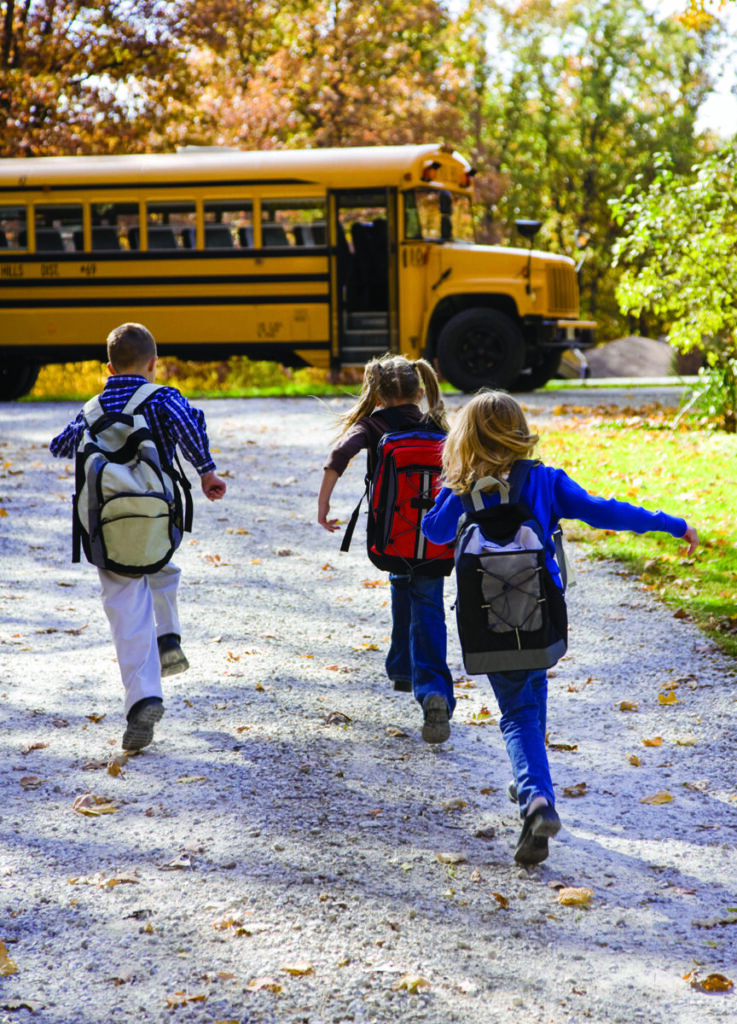
As students head back to school, ReadyWisconsin is encouraging parents to make sure safety is part of their back-to-school planning.
Emergency planning and resources
“Kids spend a lot of time away from home during the school year, so it’s important that they know what to do if there’s an emergency during the day,” said Wisconsin Emergency Management Administrator Greg Engle. “Parents should spend some time going over how to respond to those situations, so kids can start the year safely.”
ReadyWisconsin encourages families to take the following steps with their students to help give them the tools needed for the new school year:
- Create an emergency communications plan, which lists the phone numbers of parents, along with members of a student’s extended family or close friends to serve as backup contacts. Make sure a copy of that plan is available at school and in your student’s backpack. You can find a sample emergency communications plan on the ReadyWisconsin website at readywisconsin.wi.gov/make-a-plan/.
- If cell phones are allowed at school, program them with emergency contact numbers.
- Review safety information shared by your school, including school bus safety, evacuation procedures, and how students will be reunited with families if there were to be an emergency or other incident during the school day.
- Talk to your student’s teacher about participating in ReadyWisconsin’s Student Tools for Emergency Planning (STEP) program. This free curriculum for fourth and fifth grade classrooms helps teach students about being ready for disasters. Educators can find enrollment information at https://readywisconsin.wi.gov/step/.
Get savvy with school bus safety
Each school day, 25 million children ride a bus to school in the United States. The National Highway Traffic Safety Administration (NHTSA) says that school buses are the safest way for children to travel to and from school. The majority of school bus-related injuries occur while students are boarding and getting off the bus. Over the last 10 years, the NHTSA says nearly two-thirds of school-age pedestrians who were fatally injured by school buses or other vehicles were hurt after being struck while entering or exiting the bus.
Riding a school bus can be a novel experience no matter a student’s age or grade. Kindergarteners may be introduced to the school bus on their first day of school, while older students are no doubt familiar with life inside a school bus. But all students and families can benefit from a refresher course on school bus procedures to ensure this school year begins on safe footing.
- Be a smart pedestrian. Riding the school bus is very safe, but injuries can occur walking to and from the bus stop. Watch for cars backing out of driveways and always look both ways multiple times before crossing streets.
- Stand away from the curb. The National Safety Council advises keeping six feet, or three to five giant steps, away from the curb or road while waiting for the bus. Young children should be carefully supervised.
- Be visible. Always cross in front of the bus, making eye contact with the driver so that he or she knows your intentions before crossing. Better yet, wait for the driver to give the OK to cross. If you drop something, do not bend down to pick it up. Tell the driver instead. When leaving the bus, students should make sure there is no oncoming traffic and wait for a signal from the bus driver before crossing busy streets.
- Remain seated. Find a seat promptly and remain seated for the duration of the ride. Do not stand up and proceed down the center aisle until the bus has stopped. Observe the rules on the bus, and keep the center aisle clear of backpacks.
- Minimize distractions, speak quietly, and behave so that you do not distract the driver.
Walking/biking safety
Students may walk or bike to school if the school permits. School tends to begin during the morning rush hour, so students must exercise extreme caution when walking or biking to school. Stick to sidewalks whenever possible when walking. Cyclists should follow the rules of the road, including riding in the same direction as traffic. Choose the safest route as a family and practice it before the first day of school, advises the security company ADT.
Backpack safety
Choose an ergonomically designed backpack to enhance safety and comfort. Backpacks should weigh no more than 5 to 10 percent of the child’s body weight, advises the National Safety Council. Rolling backpacks should be avoided since they are a tripping hazard.
With a new school year on the horizon, students and their parents can discuss all aspects of school safety so the year starts off on the right foot.

